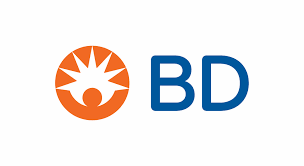Becton Dickinson and Co.’s Commitment to Chemical Safety

Download Profile
Our pledge to “helping all people live healthy lives” has inspired us to help address social and environmental challenges.
This isn’t just the “right” thing to do; it’s much more than that. We believe it’s key to the future of our business.
For example, we see the need to minimize the use of hazardous materials in our processes and products. Among our 2020 sustainability goals launched in July 2015, we set goals to eliminate priority materials of concern in each of the following product categories:
• Devices: PVC and Phthalates
• Instruments: Phthalates, Brominated Flame Retardants (BFRs) and Heavy Metals
• Packaging: PVC and Expanded Polystyrene
Toward this end, in 2015, BD Intima II PLUS was launched for the Chinese market. It meets basic requirements for infusion and meets additional requirements for pediatric, gynecology, oncology, CT and specialty infusion processes.
The new product is made from polyurethane, replacing DEHP-plasticized PVC that was used in the previous version of the product.
BD maintains a Materials of Concern list, which includes legally restricted or reportable chemicals, as well as additional substances added by BD such as PVC, latex and BPA. A decision to place a chemical on the list, beyond a legal requirement, is made by BD’s Chemical Review Board. The decision is based on the level of stakeholder interest combined with overall impact on our enterprise-wide portfolio.
To collect information on chemicals in products from our suppliers, we have developed a web-based communication tool and database called Material Disclosure. BD’s preferred approach is for suppliers to provide full material disclosure. In the long term, this eases the reporting burden on our suppliers, as only changes to the supplied material need to be communicated.
During 2016, BD funded a project to upgrade and implement a comprehensive supplier collaboration platform with automatic verification of chemical presence for all its purchased materials. This new platform will be linked to BD’s global ERP system and will feed chemical data and risk attributes into BD’s Global Specification database, housed within the ERP. This tool will allow engineers to identify potential chemicals of concern early in the development cycle and find safer alternatives if available. The new tool is being implemented to be fully operational at the end of 2017.
BD has produced a guidance document to help our suppliers fulfill requirements for material disclosure.
Additionally, we have developed a code of conduct for our suppliers, available in 12 languages. We expect all suppliers to review and acknowledge the code of conduct, and we hold a host of activities to connect and educate them.
BD makes our chemical policy, reduction goals, progress reports, and Materials of Concern list publicly available on its website, along with our documentation for suppliers. BD believes that being transparent about where we are on the journey is critical in open communications to our customers and stakeholders. This is why we have made our responses and score to the CFP Survey public for 2016.
At BD, we have the unique opportunity to fulfill our life’s work through our work life, and we take seriously our ability to serve unmet societal needs through business models and initiatives that also contribute to our commercial success. We will continue our unwavering support to make a difference—not just for our shareholders, but for the world as a whole.
Ellen Kondracki
Senior Director, Global Sustainability
From the 2017 CFP Report

